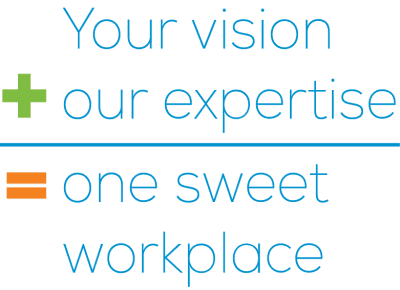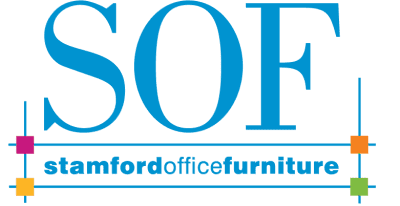6 Ways to Incorporate Art and Decor with Your Executive Office Furniture
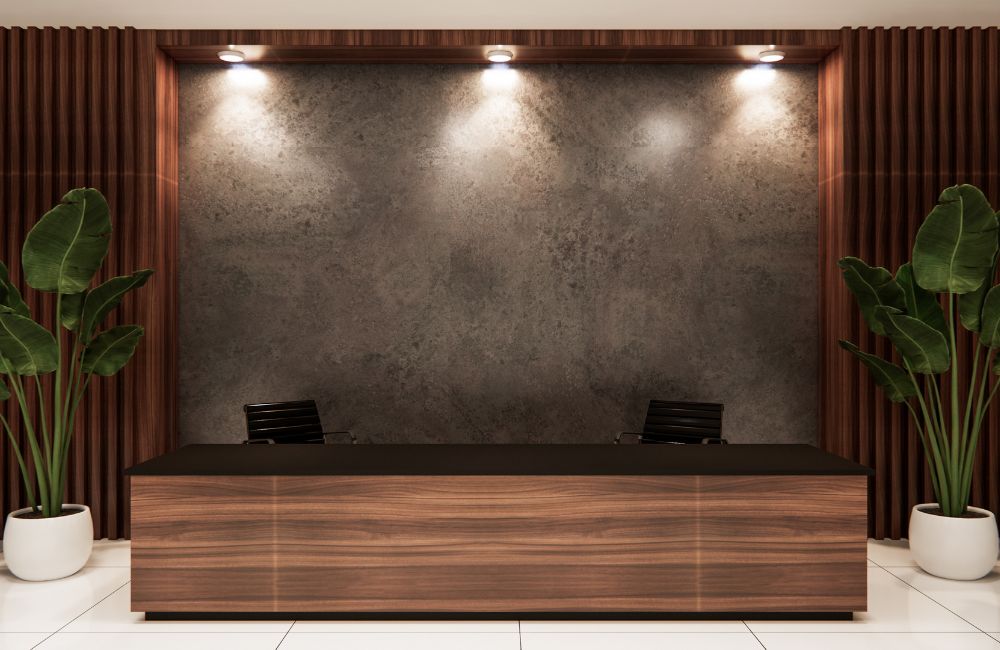
Table of Contents
Key Takeaways
✔ Select furniture that enhances both the functionality and visual appeal of your office space.
✔ Coordinate colors between art, decor, and furniture to create a cohesive and harmonious environment.
✔ Use art and decor to draw attention to focal areas in your office, complementing key pieces of furniture.
✔ Reflect your unique taste or brand identity through personalized art and decor choices.
✔ Opt for decor items that are not only aesthetically pleasing but also serve practical purposes in your office.
✔ Regularly update your office decor with seasonal or rotating art to keep the space fresh and engaging. |
Incorporating art and decor into your executive office is a powerful way to elevate the ambiance and reflect your unique style while complementing your furniture. The right combination of artwork, decor, and executive office furniture not only enhances the aesthetic appeal but also creates a productive and inspiring environment. By thoughtfully integrating these elements, you can craft a workspace in White Plains, NY, that is both visually striking and functionally efficient.
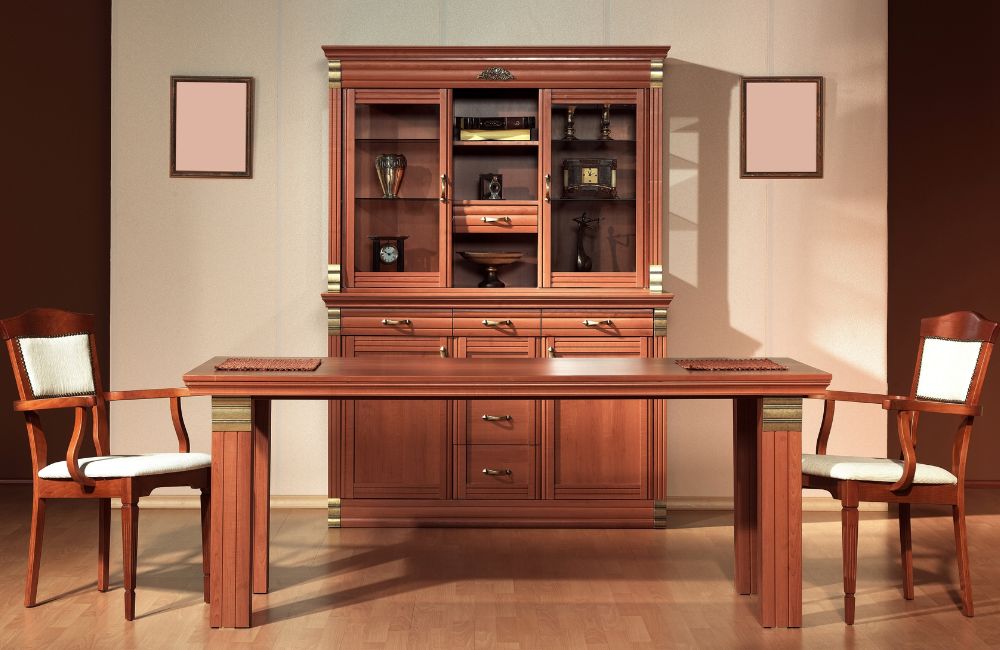
6 Strategies for Integrating Art and Decor with Your Executive Office Furniture
1. Balance Functionality and Aesthetics
When selecting executive office furniture, it’s essential to consider how these pieces will interact with the artwork and decor elements within the office. The goal is to create a cohesive environment that is both practical for work and pleasing to the eye.
Choosing Furniture that Complements the Style of the Artwork
The furniture should not only provide comfort and functionality but also enhance the visual appeal of the space. For instance:
-
- Modern Art: Pair with sleek, minimalist furniture to maintain a contemporary feel.
-
- Classical Art: Opt for rich, wooden pieces with intricate details to complement traditional artwork.
- Abstract Art: Choose furniture with clean lines and neutral colors to allow the art to stand out.
Opting for Multifunctional Pieces
To maximize both the functionality and aesthetic appeal of your office, consider investing in multifunctional executive office furniture. These pieces serve dual purposes, offering practical use while contributing to the overall design of the space. Examples of multifunctional furniture include:
-
- Storage Cabinets: Choose stylish cabinets that double as display areas for art or decor.
- Convertible Desks: Select desks that can transition from sitting to standing positions while maintaining a sleek appearance.
- Shelving Units: Opt for shelves that not only store books and files but also provide a platform for showcasing decorative items.
Enhancing the Workspace with Art Without Overwhelming It
The key to successfully integrating art with your executive office furniture is to ensure that the artwork enhances the space without overwhelming it. Art should serve as a complement to the furniture, not a distraction. Here are some tips to achieve this balance:
-
- Scale and Proportion: Choose art pieces that are appropriately sized for the space. Large, bold artwork can make a statement, but it should not overpower smaller, more delicate furniture.
- Placement: Position artwork strategically, such as above the desk or in a seating area, where it can be appreciated without dominating the room.
- Color Coordination: Ensure that the colors in the artwork harmonize with the tones of the furniture, creating a unified look.
2. Do Color Coordination
Incorporating color coordination between your executive office furniture and art decor is crucial to creating a cohesive and professional environment. A well-thought-out color scheme can significantly enhance the visual appeal of your office while also influencing the atmosphere and productivity within the space. Here’s how you can effectively coordinate colors to elevate your executive office.
Matching or Contrasting Colors
One of the key strategies in color coordination is deciding whether to match or contrast the colors of your executive office furniture with your chosen artwork.
Matching Colors
-
- Unified Look: When you match the colors of your art with your furniture, it creates a unified, calming effect. For example, a navy blue executive desk paired with abstract art featuring similar tones will harmonize the space.
- Consistency: This approach works well if your goal is to maintain a consistent theme throughout the office, offering a sleek and sophisticated look.
Contrasting Colors
-
- Dynamic Atmosphere: On the other hand, contrasting colors can add energy and interest to your office. A vibrant piece of art with bold reds or yellows can stand out against neutral-toned executive office furniture.
- Visual Interest: Contrasting colors are perfect for breaking the monotony and adding layers of visual interest, ensuring that your office feels dynamic and engaging.
Using Color Theory
Color theory plays a vital role in determining the overall mood and atmosphere of your executive office. By understanding the basics of color theory, you can create a space that not only looks good but also enhances your work environment.
-
- Complementary Colors: These are colors opposite each other on the color wheel, like blue and orange. Using complementary colors in your office can create a vibrant and energetic environment.
- Analogous Colors: These are colors next to each other on the color wheel, such as blue and green. An analogous color scheme provides a more harmonious and calming effect, ideal for a serene workspace.
- Monochromatic Colors: This involves different shades of the same color, offering a minimalist and cohesive look that’s perfect for modern executive offices.
Psychology of Colors
The colors you choose for your executive office furniture and decor can have a profound impact on mood and productivity. Different colors evoke different emotions. Understanding this can help you design a workspace that boosts performance and well-being.
-
- Blue: Blue is associated with stability and reliability, making it a popular choice for businesses aiming to project security. It’s also frequently used in office decor, as studies suggest that blue environments boost productivity and creativity.
-
- Green: Green symbolizes balance and harmony, making it ideal for reducing stress and promoting a tranquil workspace. It’s a great choice for furniture accents or wall art.
- Red: Red is a powerful color that can energize and stimulate, but it should be used sparingly. Incorporating red in small doses, such as in a statement art piece, can add vitality to your office.
- Yellow: Known for promoting creativity and optimism, yellow accents can brighten up an executive office, making it feel more welcoming and innovative.
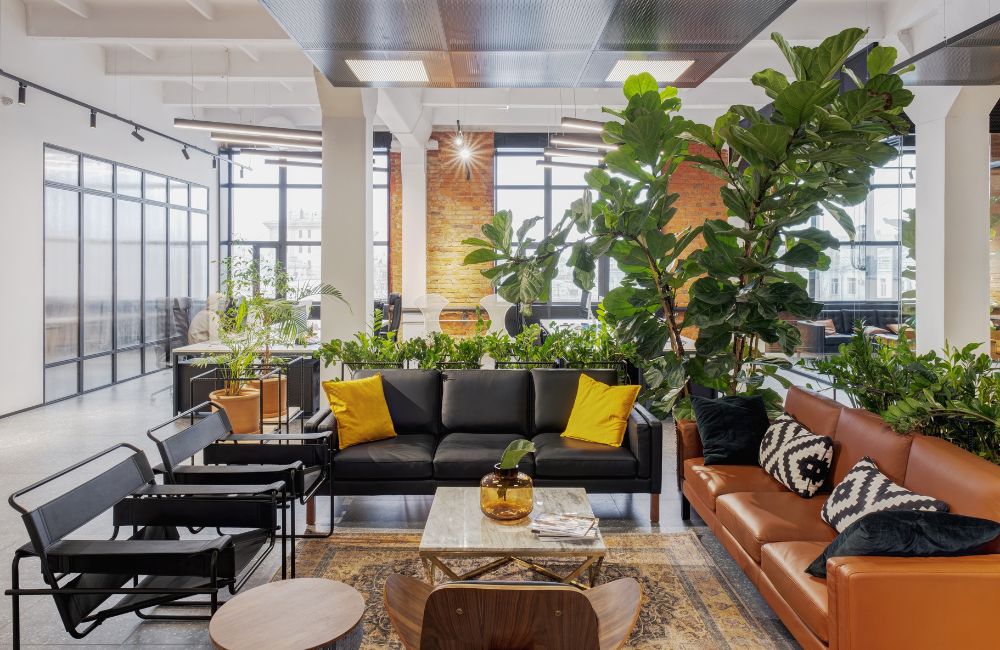
3. Highlight Key Pieces
Creating a visually appealing office involves strategically integrating art to enhance the space. By focusing on key areas within your office, you can create a harmonious and inspiring environment with executive office furniture. Here’s how to highlight key pieces effectively.
Identify Focal Points
When incorporating art into your executive office, start by identifying the primary focal points. These are areas that naturally draw attention, such as:
- Behind the Desk: The wall behind your desk is one of the most prominent spots in your office. A well-chosen piece of art here can set the tone for the entire space and reflect your personal or professional brand.
- Meeting Area: The space where you meet clients or colleagues is another ideal location for impactful art. Consider pieces that inspire conversation or creativity.
- Entryway or Reception Area: First impressions matter. The entry or reception area is the perfect place to display art that captures the essence of your office and sets a welcoming tone.
Use Lighting Strategically
Proper lighting is essential for showcasing your art and enhancing the overall aesthetic of your executive office furniture. Lighting can make a significant difference in how art is perceived and can add depth to the space.
- Accent Lighting: Use spotlights or track lighting to focus attention on specific pieces of art. This type of lighting highlights the artwork without overpowering it.
- Natural Light: If possible, position art near windows to take advantage of natural light. However, be mindful of direct sunlight, which can damage artwork over time.
- Layered Lighting: Combine different types of lighting—ambient, task, and accent—to create a balanced and well-lit environment. This ensures that both your art and executive office furniture are presented in the best light.
Consider Scale and Proportion
The scale and proportion of your art relative to your executive office furniture are crucial to creating a balanced and harmonious space. Artwork that is too large or too small can throw off the visual equilibrium of the room.
- Proportional Balance: Ensure that the size of the artwork is proportional to the furniture. For example, a large painting works well behind a sizable executive desk, while smaller pieces are better suited for more intimate spaces like a reading nook or a side wall.
- Grouping Art: If you prefer a collection of smaller pieces, consider grouping them together to create a gallery wall. This can make a bold statement without overwhelming the space.
- Height Consideration: Hang art at eye level, or slightly above, when it is positioned behind executive office furniture like a desk or seating area. This ensures that the art is easily viewable and not obscured by the furniture.
4. Incorporate Personal Style
Your executive office is an extension of your personality and a reflection of your brand identity. Incorporating your personal style into your office decor not only makes the space more comfortable and inspiring but also helps communicate who you are to clients, colleagues, and visitors. Here’s how to create a workspace that’s uniquely yours.
Reflect Your Tastes and Brand Identity
The first step in personalizing your office space is to reflect your tastes and brand identity through the art and decor you choose. Whether you prefer modern minimalism, classic elegance, or eclectic vibes, your executive office furniture should harmonize with these elements.
- Identify Key Style Elements: Determine the key style elements that resonate with you—whether it’s sleek lines, rich textures, or vibrant colors.
- Incorporate Signature Pieces: Add decor items that showcase your unique taste, like a statement art piece or a custom-designed rug.
Include Pieces that Resonate with Your Professional Ethos
Your office should reflect not just your personal style, but also your professional ethos and values. The decor and furniture in your office can serve as subtle reminders of what you stand for, creating an environment that motivates and inspires you daily.
- Inspirational Artwork: Hang art that reflects your core values, such as perseverance, innovation, or leadership. This could be in the form of motivational quotes, symbolic imagery, or even awards and accolades.
- Cultural and Historical Pieces: If your work is influenced by a specific culture or history, integrate elements from that heritage into your office design. For example, an executive office furniture set made from locally sourced materials or artwork representing cultural motifs can speak volumes about your values.
- Personal Memorabilia: Display items that have personal significance and remind you of your professional journey—such as framed photos of pivotal moments or souvenirs from important business trips.
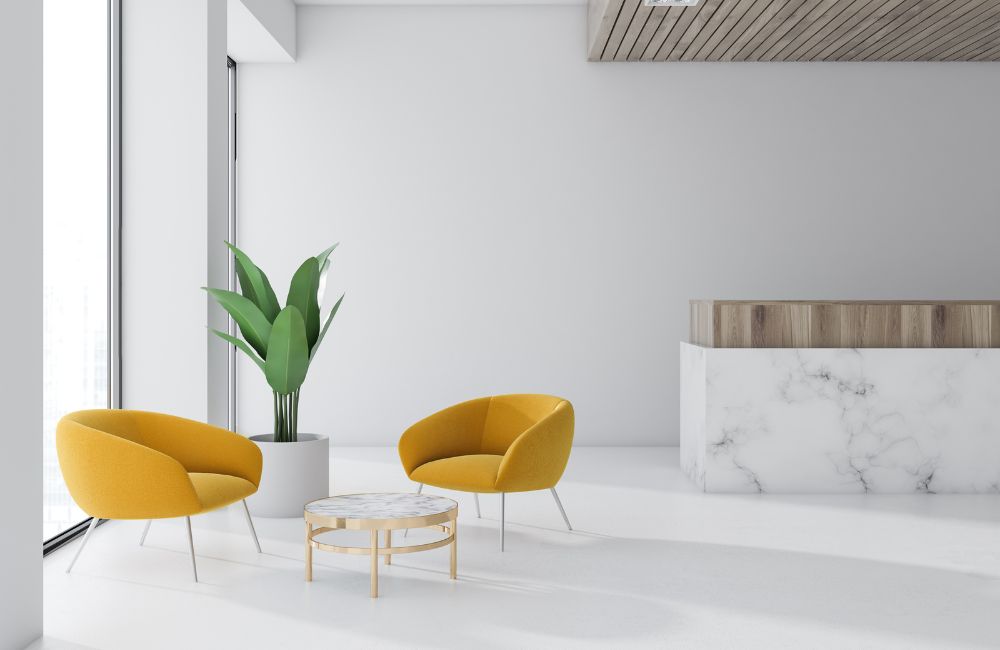
5. Choose Functional Decor
When designing an executive office, the decor should also enhance the functionality of the space. By integrating decor items that are both stylish and practical, you can create a sophisticated environment that supports productivity and comfort.
Decorative Storage Solutions
One of the easiest ways to blend style and function in an office is by using decorative storage solutions. Executive offices often require ample storage for documents, supplies, and personal items. Instead of settling for bland filing cabinets, consider:
- Stylish Bookcases: Choose bookcases that complement the style of your executive office furniture. Options with open shelving can also display art pieces or plants, adding a touch of elegance.
- Storage Ottomans: These versatile pieces not only provide additional seating but also offer hidden storage for less frequently used items.
- Decorative Boxes: Place aesthetically pleasing boxes or baskets on shelves or desks to store smaller items while maintaining a clutter-free look.
Sculptures and Installations as Functional Elements
Art doesn’t have to be limited to paintings on the wall. Sculptures and installations can serve as both artistic statements and functional elements within your office.
- Room Dividers: Use sculptural room dividers to separate different areas of your office, such as a meeting space and a work area. This not only adds visual interest but also enhances privacy.
- Sculptural Lighting: Consider lighting fixtures that double as works of art. A well-placed, sculptural chandelier or floor lamp can illuminate the space while serving as a focal point.
- Desk Accessories: Select functional desk accessories, like paperweights or organizers, that also serve as decorative pieces. This adds personality to your workspace without compromising functionality.
Ergonomic Furniture with Aesthetic Appeal
Ergonomic furniture is crucial in any office, and in an executive setting, it should seamlessly blend with the overall decor. Selecting the right ergonomic pieces not only promotes comfort and productivity but also ensures a cohesive and professional appearance. With ergonomics, you foster a healthy, pain-free workforce, leading to greater engagement and productivity.
- Ergonomic Chairs: Opt for ergonomic chairs that not only support good posture but also match the design and materials of your executive office furniture. Look for high-quality leather or fabric finishes that complement your desk and other furnishings.
- Adjustable Desks: Height-adjustable desks offer flexibility and health benefits, allowing you to switch between sitting and standing. Choose a desk with a sleek design that matches the style of your office.
- Ergonomic Accessories: Items like keyboard trays, monitor stands, and footrests should blend seamlessly with your office decor. Select pieces in materials and colors that coordinate with your furniture.
6. Go For Seasonal and Rotating Art
Incorporating seasonal and rotating art into your office is an excellent way to keep your workspace dynamic, engaging, and inspiring. By regularly updating the artwork and decor in your office, you create a fresh atmosphere that keeps your environment aligned with current trends and events. Here’s how:
Rotate Artwork Seasonally
One of the simplest ways to refresh your office environment is by rotating artwork on a seasonal basis. This approach allows you to:
- Introduce Variety: By changing art regularly, you can avoid visual fatigue and keep the space interesting.
- Reflect the Seasons: Choose artwork that embodies the essence of the current season, such as bright, vibrant colors for spring and summer, or warm, cozy tones for fall and winter.
- Match Office Aesthetics: Ensure that the seasonal artwork complements the style and color scheme of your executive office furniture.
Use Temporary Installations or Art Walls
Temporary art installations or dedicated art walls are perfect for showcasing different pieces periodically. These options offer flexibility and creativity:
- Art Walls: Designate a wall in your office for rotating displays. You can change the pieces according to the season, special events, or even personal milestones.
- Temporary Installations: Consider incorporating temporary art installations that can be easily updated or replaced. These could include wall decals, fabric art, or even hanging sculptures that can be swapped out seasonally.Post that you may also like:
7 Strategies for Scoring the Best Deals at Office Furniture Stores
Frequently Asked Questions
What mistakes should I avoid when decorating an executive office?
Avoid overcrowding with too much decor or furniture that can make the space feel cluttered. Ensure your decor aligns with a professional image and is well-balanced in color and style. Don’t neglect proper lighting, as it impacts the mood and functionality.
What are some decor ideas for creating a welcoming executive office?
Start with comfortable seating and add personal touches like art or books to create a warm atmosphere. Use soft lighting and plants to enhance coziness. Keep the layout open and uncluttered to ensure a welcoming feel.
How can I use mirrors in my executive office decor?
Mirrors can make your office appear larger and brighter by reflecting light. Place large mirrors to create depth or highlight decor. Choose frames that complement the office style.
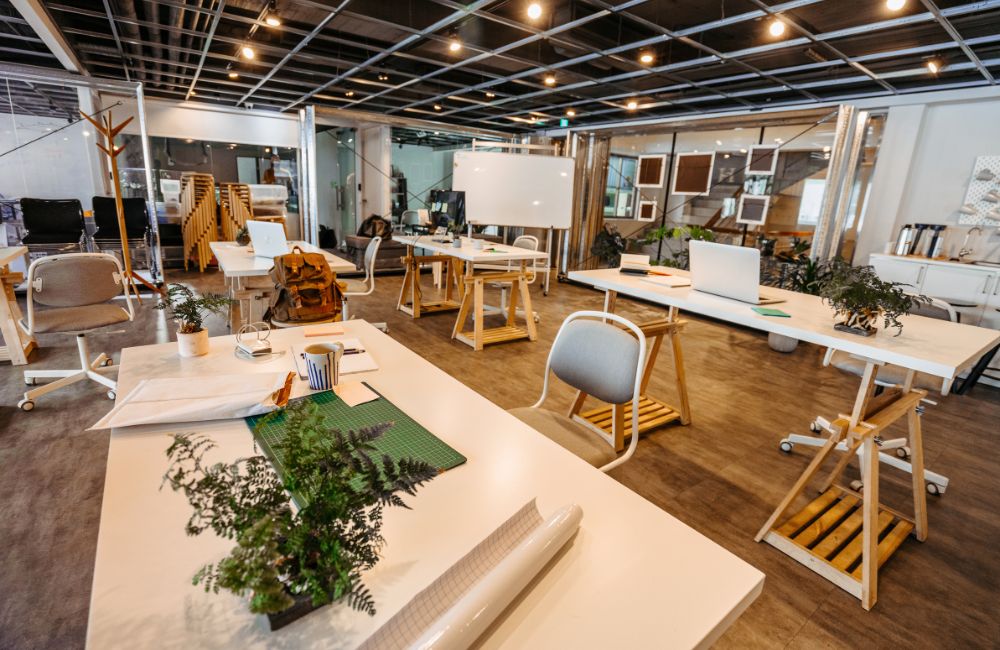
Discover the Perfect Executive Office Furniture in White Plains, NY!
At Stamford Office Furniture, we’re committed to helping you design a workspace in White Plains, NY, that’s both stylish and functional. Our expert team will assist you in selecting the ideal executive office furniture that not only meets your needs but also complements any seasonal art and decor you wish to incorporate. Visit our White Plains, NY showroom today to discover our wide selection of premium furniture designed to enhance your office space year-round. Contact us today!
